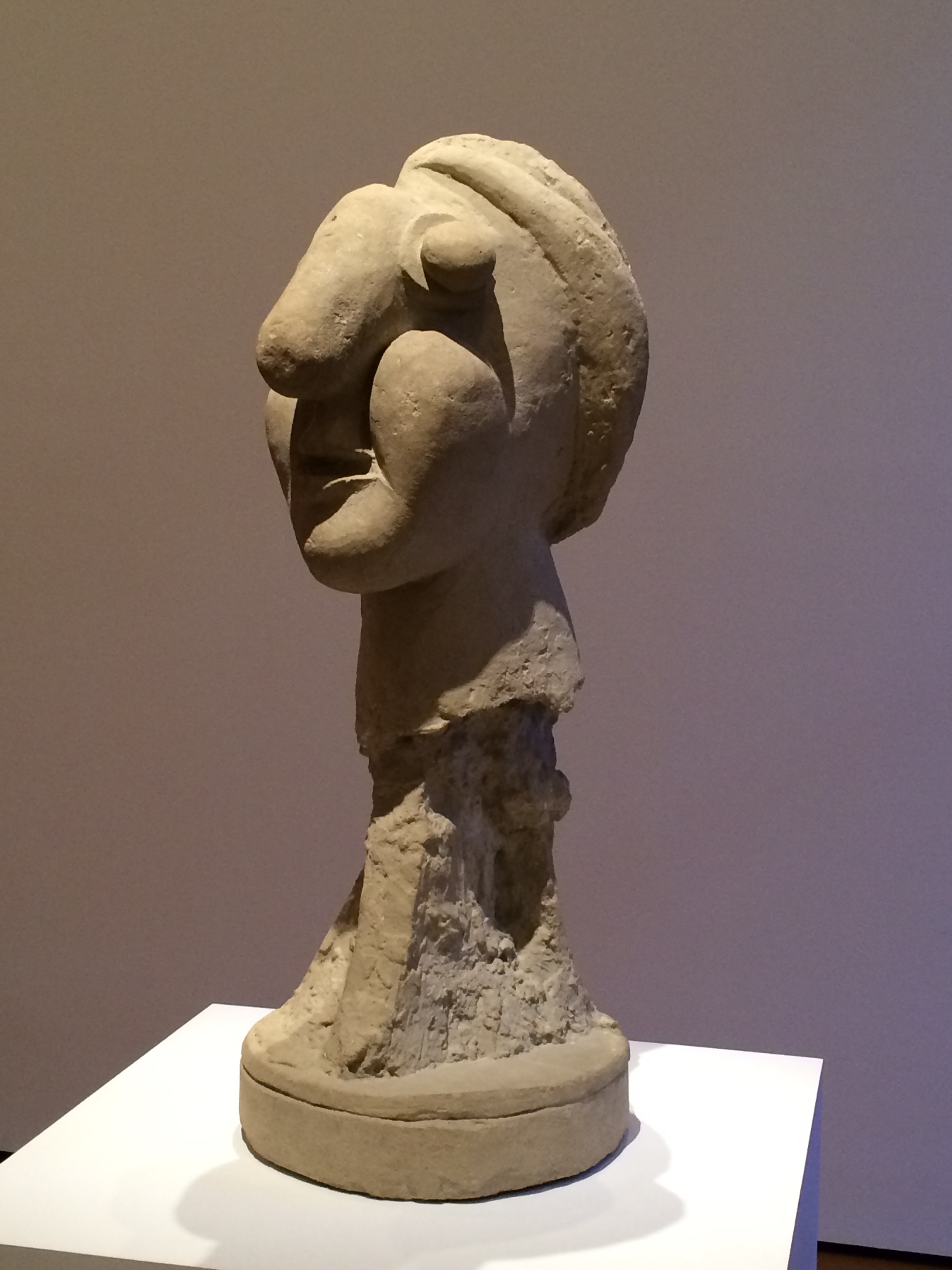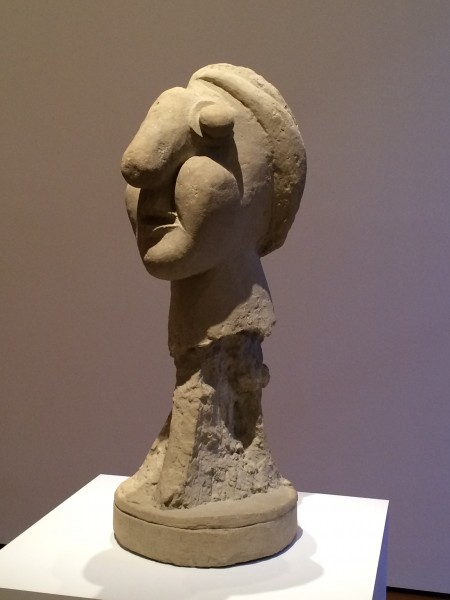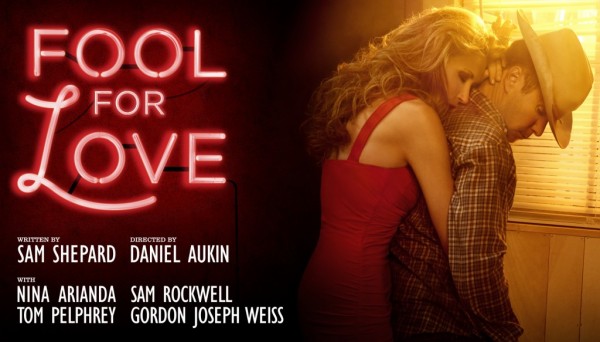
24 Sep TIO NYC: Picasso at MOMA & “Fool for Love”
Joy.
The conventional definition is “a feeling of great pleasure and happiness.”
Case in point, the must-see “Picasso Sculpture” at New York’s Museum of Modern Art. (Through February 7, 2016.)
Picasso was our first stop on what is always an invigorating, enlightening cultural bath in the great tub known as the Big Apple.
“Picasso Sculpture” is a sweeping survey of Pablo Picasso’s innovative and influential work in three dimensions, the first museum exhibition of its kind in the United States in nearly half a century.
Guaranteed the wit and invention (some X-rated) of this ground-breaking genius will make your heart smile.
From MOMA’s introduction:
Over the course of his long career, Picasso devoted himself to sculpture wholeheartedly, if episodically, using both traditional and unconventional materials and techniques. Unlike painting, in which he was formally trained and through which he made his living, sculpture occupied a uniquely personal and experimental status for Picasso. He approached the medium with the freedom of a self-taught artist, ready to break all the rules. This attitude led him to develop a deep fondness for his sculptures, to which the many photographs of his studios and homes bear witness. Treating them almost as members of his household, he cherished the sculptures’ company and enjoyed re-creating them in a variety of materials and situations. Picasso kept the majority in his private possession during his lifetime. It was only in 1966, through the large Paris retrospective Hommage à Picasso, that the public became fully aware of this side of his work. Following that exhibition, in 1967 The Museum of Modern Art organized The Sculpture of Picasso, which until now was the first and only exhibition on this continent to display a large number of the artist’s sculptures.
Picasso Sculpture focuses on the artist’s lifelong work with sculpture, with a particular focus on his use of materials and processes. The exhibition, which features more than 100 sculptures, complemented by selected works on paper and photographs, aims to advance the understanding of what sculpture was for Picasso, and of how he revolutionized its history through a lifelong commitment to constant reinvention. The exhibition is organized in chapters corresponding to the distinct periods during which Picasso devoted himself to sculpture, each time exploring with fresh intensity the modern possibilities of this ancient art form.
And this rave by Roberta Smith of the New York Times.
Many exhibitions are good, some are great and a very few are tantamount to works of art in their own right — for their clarity, lyricism and accumulative wisdom.
The Museum of Modern Art’s staggering “Picasso Sculpture” is in the third category. Large, ambitious and unavoidably, dizzyingly peripatetic, this is a once-in-a-lifetime event. It sustains its vision through a ring of 11 grand spaces on the museum’s fourth floor, tracing the serial genre-bending forays into three dimensions wrought by this 20th-century titan of painting. Each bout lasted a few years and was different from the one before, and each has been given its own gallery, more or less.
With one stunning exception — the voluptuous saturnine Marie-Thérèse Walter — the women in Picasso’s life don’t herald stylistic changes in the round as they tend to on canvas. In sculpture, the materials become the muses.
The show, which opens on Monday, is the latest in a string of landmark Pablo Picasso exhibitions for which the Modern has been justly famous since 1939. It is full of loans that perhaps only this museum has the clout to secure, including about 50 pieces from its collaborator, the Musée Picasso in Paris. The approximately 140 sculptures here were made between 1902 and 1964; encompass at least 10 media — among them wood, plaster, sheet metal, clay, beach-smoothed pebbles — and, in assemblage, all manner of found objects great and small. The galleries are dotted with works never before exhibited in New York, and reunite related efforts not seen together since they were in Picasso’s studio.
The show’s two grandest, most thrilling reunions are the gathering in its second gallery of all six “Glass of Absinthe” sculptures of 1914, those tiny weirdly Keatonesque charmers of painted bronze that can suggest drunken faces and profiles; and in its fourth, the five monumental tumescent heads in white plaster of Marie-Thérèse, more than have ever been shown together, at least in the United States. Seen from the vantage point of the absinthe glasses, the first Marie-Thérèse bust looms in the distance, as if at the end of a garden.
High points aside, there hasn’t been a Picasso sculpture survey of this scope in this country since 1967…
If the Picasso show will make your heart smile,”Fool for Love” will rip it out.
“Fool for Love” is a taut, moody, bruising drama written by American playwright and actor Sam Shepard, in preview until the official opening on October 8.
The story focuses on May and Eddie, former lovers who meet again in a motel in the Mojave Desert. The spare, edgy production is the first revival of a Shepard play on Broadway since “True West” in 2000. The show was first produced in February 1983.
Go! – unless, of course, you are clueless about impossible relationships and/or have never been in love and lost (your heart, your mind, your dignity, an earring in some stranger’s bed).
Below is Ben Brantley’s review for the New York Times from its run in Williamstown, Massachusetts.
Nina Arianda and Sam Rockwell must have gotten to know each other real well, real fast this summer. If their impossible mission was to achieve an instant, unfathomable intimacy, that assignment has been more than fulfilled in Daniel Aukin’s knockout production of Sam Shepard’s “Fool for Love,” which runs through Saturday at the Williamstown Theater Festival here.
Playing a man and a woman who spend their lives running away from, and straight toward, each other in this 75-minute, 31-year-old drama, Mr. Rockwell and Ms. Arianda project a mutual understanding that stings like a cut that won’t scab. Such dangerous awareness is found only among members of the same mortal family or longtime lovers. Imagine what it means if, like May and Eddie in “Fool,” you happen to be both.
Ms. Arianda and Mr. Rockwell were cast in their roles barely a month ago, after the show’s original stars, Lauren Ambrose and Chris Pine, dropped out. Sometimes urgency is the soul of theater, and perhaps limited rehearsal time worked to the advantage of a play that is, as the script dictates, to be “performed relentlessly without a break.”
Yet in portraying endless desperation, Mr. Aukin’s revival never feels rushed or frantic. His version has the full quota of bruising physical contact that’s expected of “Fool for Love.” But it’s the tightly stretched silences that get to you, with their suggestion that what’s occurring here has always been happening and will never cease.
The depth charges within the quiet link this work to the fatalism of ancient tragedy. Mr. Shepard’s late-20th-century portrait of what contemporary jargon would call a codependent couple starts to resonate as a ballad of ageless archetypes. Like Yael Farber’s current revival of Arthur Miller’s “The Crucible,” at the Old Vic in London, this production made me feel the full primal force of a piece I had wrongly concluded was tuckered out.
The supercharged 1983 New York production of “Fool,” which originated at the Magic Theater in San Francisco and starred Ed Harris and Kathy Baker, still vibrates in my memory. But subsequent interpretations, including Robert Altman’s 1985 film and a 2006 London revival starring Juliette Lewis, left me slightly embarrassed about my earlier infatuation.
Perhaps, I thought, “Fool” no longer spoke to me as it did when I was in my 20s and still agreed with Mr. Shepard’s contention, expressed in an interview around that time, that love is “terrible and impossible.” And what a relief to be long past that…




Sorry, the comment form is closed at this time.